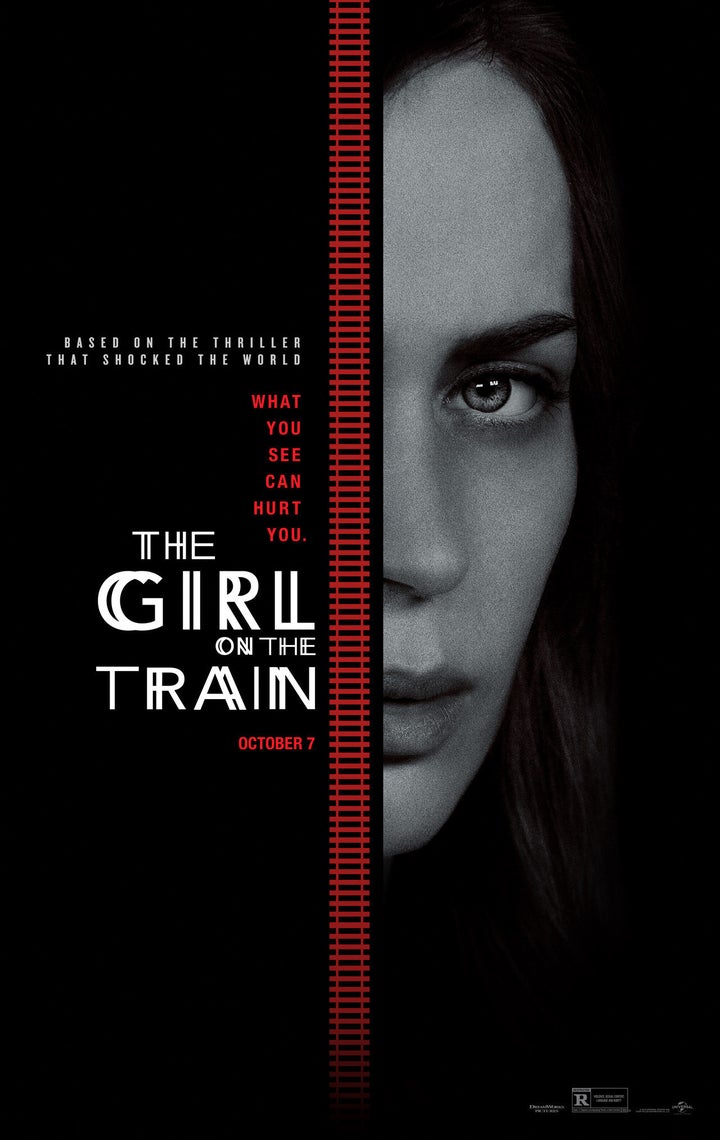

You can be highbrow. You can be lowbrow. But can you ever just be brow? Welcome to Middlebrow, a weekly examination of pop culture.
Warning: Spoilers ahead, obviously.
Paula Hawkins’ novel The Girl on the Train sold over 2 million copies in the first three months after it was published, racing past all manner of sales records. And that was before hype surrounding the film adaptation escalated, promising even more readers for the lauded domestic thriller.
So, it was fair for Tate Taylor, the director of the book’s on-screen adaptation, to assume that many moviegoers already knew what would happen in his film. Three women ― Rachel, Megan and Anna ― would tell their stories, all surrounding an unsolved murder.
Rachel, the titular girl, will think she spots evidence of an affair between Megan and her husband, a couple she notices as she rides the train north of Manhattan each day. Confirming the dalliance could help her figure out who committed the crime, but she’ll question her own perception of reality, wondering whether she can stay sober long enough to reflect on what she thinks she’s witnessed.
Megan, who’s an unreliable narrator in a separate way altogether, will tangle up stories from her past while trying to seduce a therapist behind her husband’s back.
And Anna, the new wife of Rachel’s ex-husband, will fret over the safety of their child. These plot lines will converge in an explosive reveal, before things return to relative normalcy.
How, then, will viewers stay immersed in a film that belongs squarely to a genre that’s driven by suspense? Is it as simple as the pleasure of watching events you know will happen play out? Or do directors handling movie adaptations owe it to viewers to add something ― be it a highlighted moral takeaway, an altered ending, or a moody atmosphere?
In the case of Taylor’s vision of Hawkins’ book, a combination of all three kept the film fresh, even for those who might already know the story’s climactic ending. (I won’t be coy: it’s death by wine opener. A man is killed, with a wine opener.)
“Do directors handling movie adaptations owe it to viewers to add something – a highlighted moral takeaway, an altered ending, a moody atmosphere?”
The Girl on the Train is a thriller, but it’s a thriller with a purpose. Like Gillian Flynn before her, Paula Hawkins laced a fast-paced page-turner with an extractable, political takeaway. Where Gone Girl used the domestic thriller template as an opportunity to explore the myth of the “Cool Girl,” The Girl on the Train kept readers believing it was a straight-up thriller until, at the end, it’s revealed that its heroine has been gaslighted by her ex-husband, who emotionally manipulates her so that she loses faith in her own perceptions.
Because the twist comes so near the end, it wouldn’t be accurate to call “The Girl on the Train” a book ― or movie ― about gaslighting. But the story’s life beyond its pages and on-screen scenes, the real estate it occupies in think pieces and in the minds of readers, is devoted to this concept. Why do women enjoy thrillers and true crime? Because, the book’s message implies, they so accurately mirror women’s own abusive tribulations: getting catcalled, getting gaslighted.
The gaslighting twist in the movie is revealed through a character who wasn’t in the book; a woman, played by Lisa Kudrow, who knows Rachel’s ex-husband through work. Her ex told Rachel that he lost his job because of her own behavior at a work party; but, Rachel learns through this woman, he was actually axed for sleeping around.
The tweak is fodder for the book-versus-movie comparisons that are so often central to how we discuss adaptations, and it’s a nice way to keep viewers on their toes. Until the credits roll, we wonder what else could’ve been changed.
But those who enjoyed the book for its message may be irked by the change. The character’s inclusion feels a little convenient, and Rachel’s miraculous return to sanity after the revelation is unrealistic. Gaslighting can result in longstanding psychological damage ― it’s not a witchy spell that needs only to be reversed by the uttering of a few magic words.
Regardless of how the theme was handled in the film, its inclusion is doing a service if it gets viewers thinking, and talking, about this form of emotional abuse.
And, Rachel’s distress is handled in another, subtler way that could resonate with viewers. The film is comprised almost entirely of close-up shots of Emily Blunt’s face, the back of her head, the various rooms she occupies from her shaky point of view. It’s not “Cloverfield”-level rattling ― that’d be awfully distracting for a story that’s already complicated by not one but two unreliable narrators. But the claustrophobic framing creates the feeling that this experience ― Rachel’s confusion ― is hard to escape.
That said, the film can feel airless. There aren’t many opportunities for levity, for humor to seep in and, at least briefly, lighten the mood. This tension makes some unfunny moments ― like when Rachel is caught coddling Anna’s baby outside her newly occupied old home ― very funny.
As a viewer, this is unsettling; gaslighting, as we learn, is no laughing matter. But some scenes are so surreal and symbolic (Rachel defeats her abuser with the literal tool that enables her unhappiness) that they’re best saved for the page.
Still, only when we watch a story can we immerse our senses so fully in an eerie mood, an experience meant to manipulate our perceptions.
“The Girl on Train” is in theaters Oct. 7.
Follow Maddie Crum on Twitter: @maddiecrum

